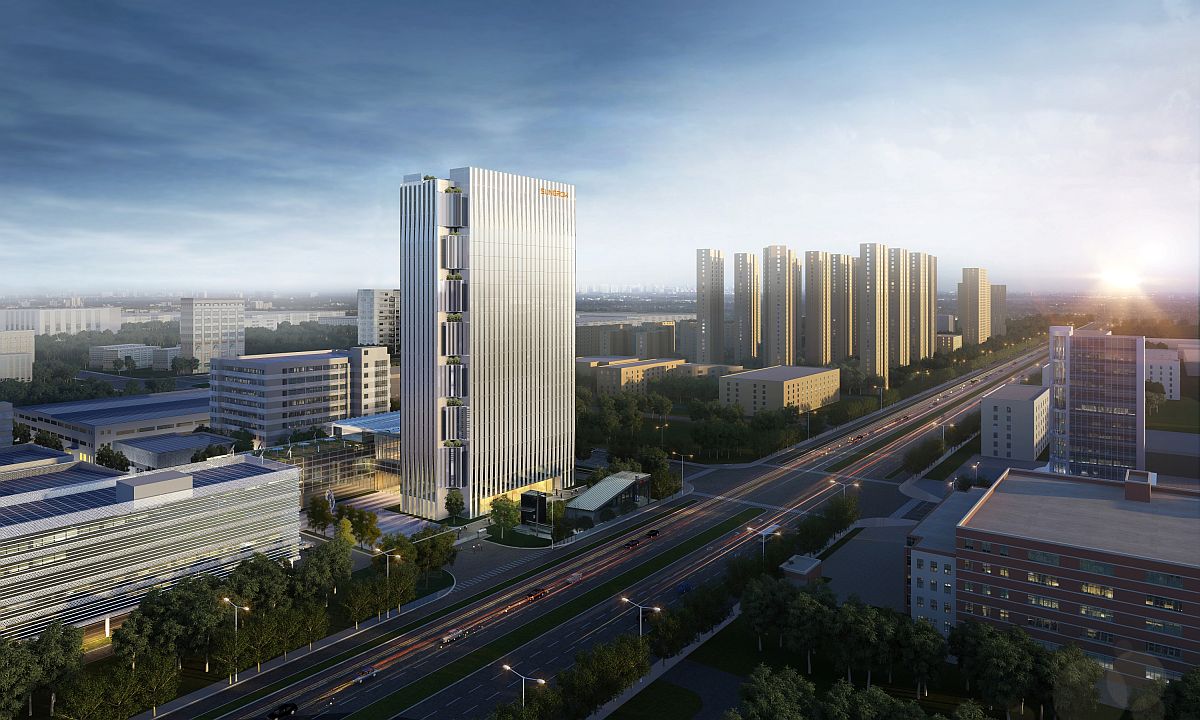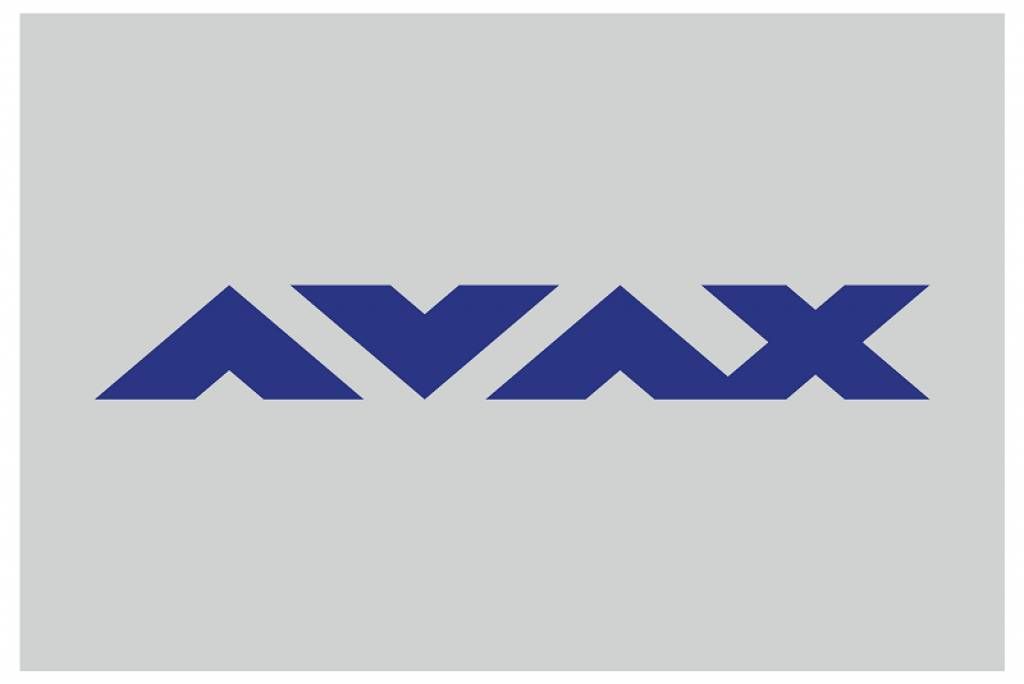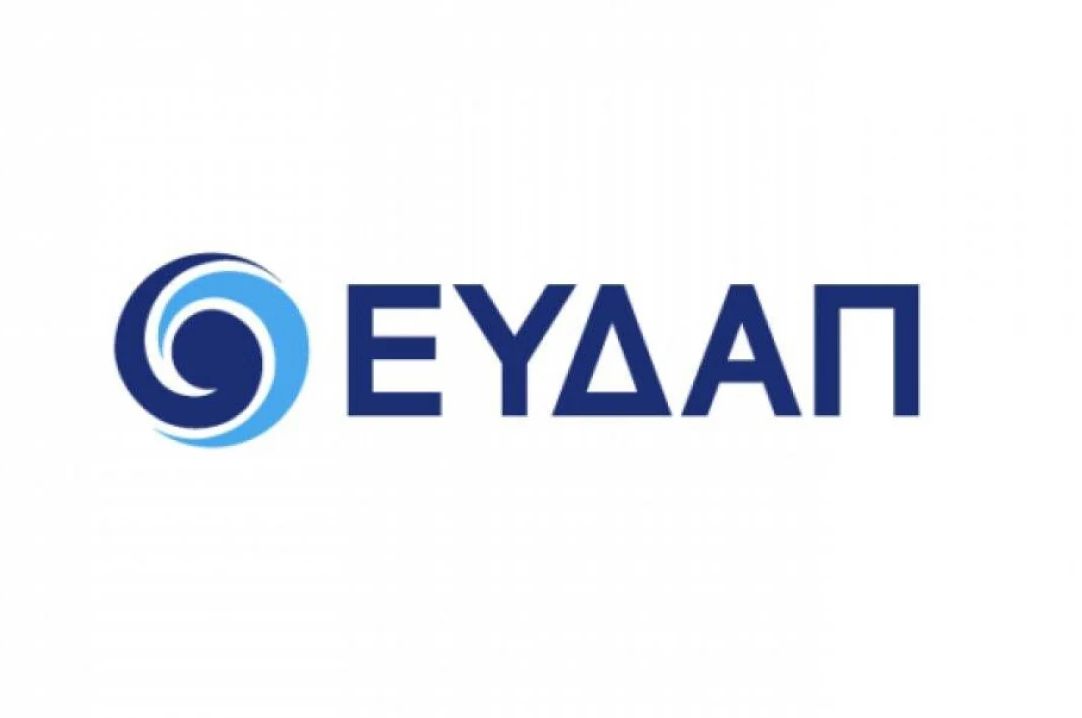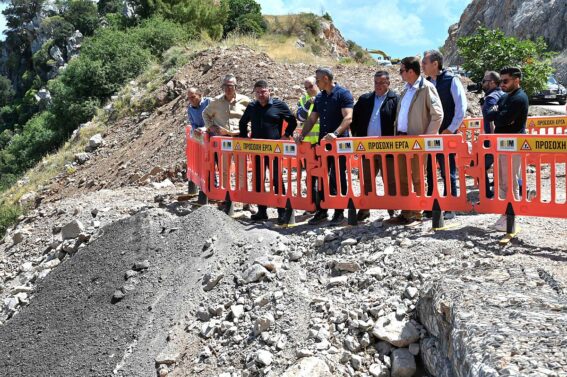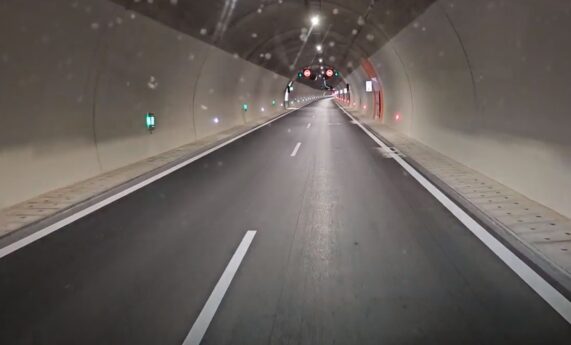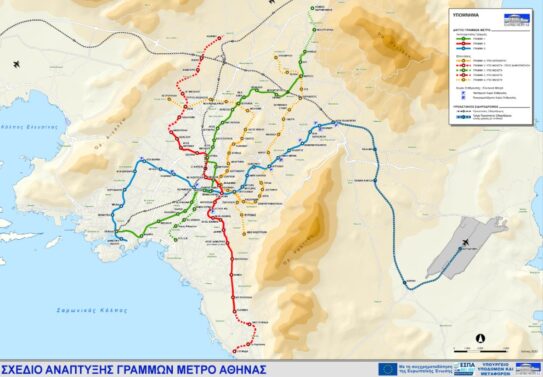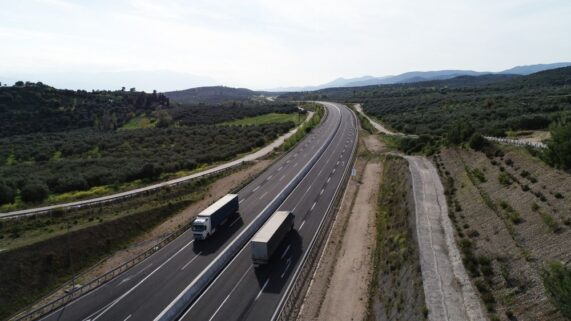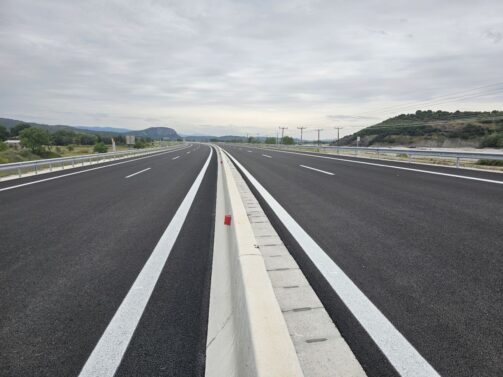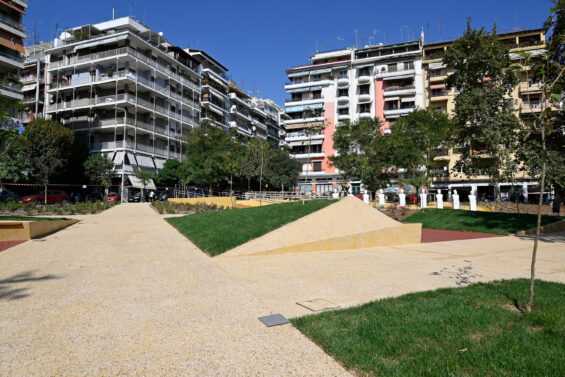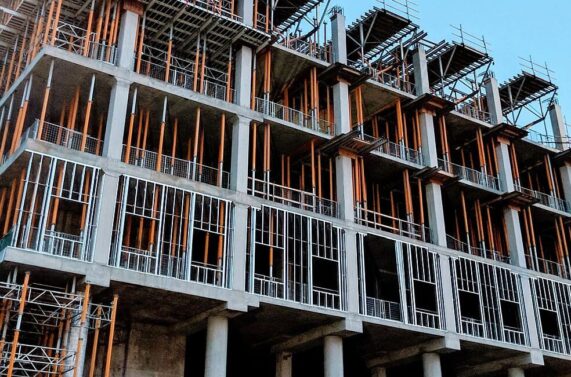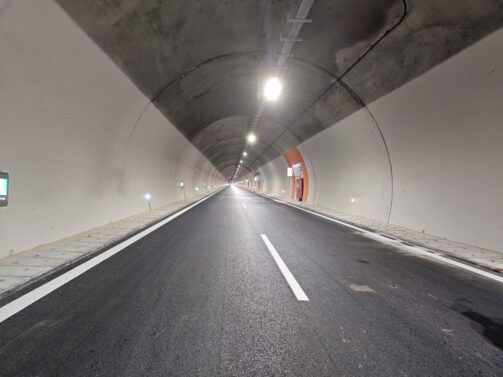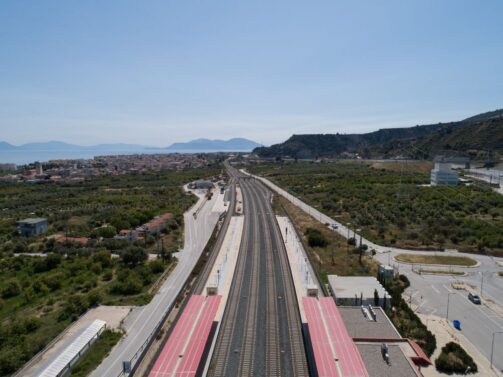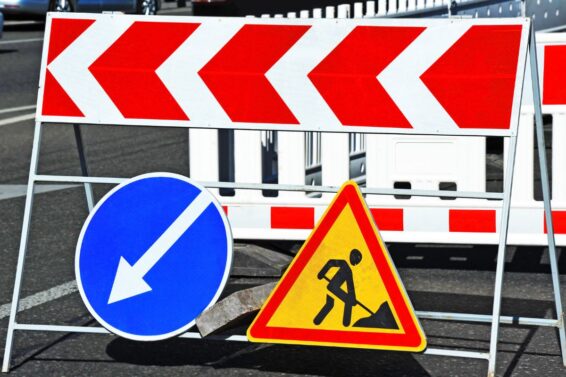When lines 2 and 3 of the Athens Metro began operating on January 28, 2000, something changed in the city. The capital of Greece during the 20th century, unlike most European cities, did not sufficiently develop its metropolitan railway network and invested in the development of road urban transport with painful results.
The first Athens Metro line that had already been inaugurated in 1869 was extended but covered a specific part of Athens connecting the port with the center and the Northern Suburbs. Athens developed rapidly in urban planning, but not in terms of transportation. The burden in a city of millions had been borne mainly by the buses.
This created a suffocating situation in the city with the effects becoming painfully apparent in the 1980s and 1990s when the city’s emissions reached record highs. Plans for a Metro already existed in the 1960s but we will get to 1992 when the construction of lines 2 and 3 began and Athenians began to see huge construction sites in their city. The “Olympic Metro” is one of the largest construction contracts that the country has experienced in its modern history.
The first decade of network development
This picture began to change with the opening of the Metro in 2020 with the operation of the two new lines. It was on January 28, 2000 when over 400,000 Athenians used their new medium of transport. Of course, the network we use today has little to do with that first network. When the first routes started, line 2 started from Syntagma and reached Sepolia, while Line 3 started from Syntagma and ended at Ethniki Amyna (National Defense).
The old timers will even remember that at Syntagma, which operated as a terminal for three years, there was also a ramp that covered one line on the dock to make boarding and disembarking easier.
Back then, the first Metro ads promised something revolutionary for Athenians. The distance of Sepolia-Syntagma and National Defense-Syntagma in 8 minutes. The amazing thing at the time was that this promise was true and the medium began to steadily gain passengers. The first ticket cost 250 drachmas (about 70 cents in euro).
In the same year, Athens experienced the first expansion of the network: in November 2000, line 2 took the first step towards the southern suburbs and reached Dafni. Then we all understood that what we had in store was an infant who would grow up like a child. In the following years we witnessed this growth, each time with the same joy and anticipation.
In 2003 it was the turn of line 3 to be extended from Syntagma to reach Monastiraki. The new terminal looks almost mythical with the archaeological finds in the heart of ancient Athens.
In 2004, a big step was taken: line 3 was extended to D. Plakentias by almost 6 kilometers (without 3 intermediate stations), while at the same time it reached El. Venizelos Airport via the Suburban. Line 2 reached Agios Dimitrios in the south and Agios Antonios. The then Minister of Transport and Communications Giorgos Souflias jokingly called line 2 the “line of the Saints”.
We reach 2007 and line 3 makes the first extension to the west, passing the Kifisos dam and reaching Aigaleo (between Kerameikos and Elaionas), completing the first generation of extensions. In the same year, the Metro began to serve the intermediate stations to the Airport, bringing to the network areas such as Paania, Pallini and Koropi. We now have line 2: Agios Dimitrios-Agios Antonios and line 3: Egaleo-D.Plakentias-Airport.
The “difficult” second decade
As a result of the rapid expansion of the network in its first years of operation, from 2009 until the end of 2010, the 3 intermediate stations of line 3 Cholargos, Nomismatokopio and Agia Paraskevi were delivered. From then we will get to 2013 to see significant expansions of the network. At the age of 13, the Metro enters “adolescence” and its limbs grow a lot.
Line 2 extends by 5km to the south and reaches Elliniko (with intermediate stations in Ilioupoli, Alimos and Argyroupoli), while in the west it reaches Anthoupoli (with Peristeri station in between). Line 3 was extended at the end of 2013 by 1 station reaching Agia Marina, a station on the borders of the Municipalities of Aigaleo and Agia Varvara. The new network is the last one to be added and will remain for several years without expansion as we were deep in the Greek crisis…
As a beacon of light since the beginning of 2012, the great extension of line 3 to Piraeus had begun. It encountered many problems, it had ups and downs and it would take 6.5 years to see the network expand. In July 2020 line 3 reached Nikaia via Agia Varvara and Korydallos. The network has now come of age and shows a new image.
The “dynamic” third decade
A big leap for the Athens Metro network will take place in 2021 with the signing of the contract for the new line 4, the tender for which had started in 2017 encountering several difficulties. The new line 4 starts to be built from Alsos Veikou in Galatsi, passing through the center of Athens and ending in Goudi. The groundwork for a new Metro line comes 29 years after the works for lines 2 and 3 started in 1992.
The most recent chapter in the story of the metropolitan railway in Athens to date will be written in October 2022 with the operation of the extension of line 3 to the center of Piraeus with the Maniatika, Piraeus and Dimotiko Theatro stations. Practically, line 3 is completed with a length of 50 km starting from Piraeus, crossing the center of Athens, the north-eastern suburbs to reach El. Venizelos Airport of Athens.
In the first days of 2023, the first extension of line 2 was announced after almost 10 years since the last extension, from Anthoupoli to Agios Nikolaos in Ilion with 4 kilometers and intermediate stations Palatiani and Ilion.
The contribution of Attiko Metro and its people who created, with the constant support of the State and European funding, two new lines that are jewels for the city and models for other Metro networks in Europe is also important, while the new line 4 will still be a step forward, with super-automatic technology that will further increase its already high status.
The future
Today lines 2 and 3 of Athens are now 23 years old. Having overcome the difficult previous decade, having a new line under construction, an extension under tender and many plans to extend the network to new areas such as the S.Niarchos Cultural Center and Varybobi for line 1, Glyfada and Menidi for line 2, Petroupoli and Lykovrysi for line 4, and the pregnant branch of line 4 (as line 5 now) from Evangelismos to PYRKAL.
The favorite means of transport of the Athenians, the “pride” of the city, “our” Metro, continues to grow with the city, bringing a new image of the city, which is once again suffering from traffic. The decade that the city “lost” due to the crisis left a clear imprint on urban transportation.
The extensions of the Metro seem like a cure for this problem and now Athens is waiting until 2030 to have 18 new stations and a new dimension in how we move in the European metropolis of the Balkans, Athens.
ΜΗΝ ΞΕΧΑΣΕΤΕ
- Ακολουθήστε το ypodomes.com στο Google News και μάθετε πρώτοι όλες τις ειδήσεις για τις υποδομές στην Ελλάδα
- Αν είστε επαγγελματίας του κλάδου, ακολουθήστε μας στο LinkedIn
- Εγγραφείτε στο Ypodomes Web TV

